| Participants |
| From N to W |
|
|
NIKIFOROU Savvas |
University of Cyprus, Nicosia - Cyprus |
 |
|
I hold a Higher National Diploma (HND) in Electrical Engineering from
Higher Technical Institute (HTI), Nicosia, Cyprus, in 1991. I have also
received a BSc degree in Computer Engineering and the MSc in Computer
Science from the University of South Florida in Tampa, Florida, U.S.A.,
in 1999 and 2002. I am currently a Systems Administrator at the
Department of Computer Science of the University of Cyprus, Nicosia,
Cyprus. I have worked at the Computer Centre at the University of Cyprus
as an assistant systems administrator (1994-1997), at the Department of
Computer Science at the University of South Florida, Tampa, Florida,
U.S.A. as a systems administrator (1997-2001), and as a special
collaborator for the National Institute for Systems Test and
Productivity (NISTP), Tampa, Florida, U.S.A. (2002). |
|
| |
|
PERREY Hanno |
DESY, Hamburg - Germany |
 |
|
I am currently working as Fellow at DESY in Hamburg, Germany. My main
activities are test beam studies for the CMS phase-I pixel barrel
upgrade and the development of a high-rate pixel beam telescope within
the European AIDA project. Together with a colleague I coordinate the
development on EUTelescope, a generic test beam data analysis framework
based on ILCSoft's Marlin application framework and written in C++. I
also work on improvements and modifications of EUDAQ, a flexible and
multi-threaded data acquisition framework written in C++, used in the
telescope data taking. Both EUTelescope and EUDAQ are in use by various
groups, and I participate in the user support. For the CMS test beam
studies I work on the client-side test suit software that communicates
with the testboard/ROC, mainly on UI and USB communication. |
|
| |
|
POROBIC Tomica |
IKS, KU, Leuven - Belgium |
 |
|
I
work at the WITCH experiment, located at the ISOLDE/CERN laboratory.
WITCH (Weak Interaction Trap for CHarged particles) is a double Penning
trap system with a retardation spectrometer, dedicated to the
measurement of fundamental constants of the weak interaction. Within the
Standard Model, beta decay is described by the V-A interaction. Other
interaction types (scalar, tensor) are allowed by the Lorentz
invariance, and still not experimentally excluded to a high degree of
precision. WITCH is dedicated to study these exotic beyond the Standard
Model components of the weak interaction by measuring the recoil energy
of daughter ions in the beta decay of 35Ar. The experiment is currently
in the data-taking phase, with the latest beam time ending in 11/2012.
My main tasks are data-taking, data analysis, maintenance of the Control
System (based on the GSI's CS framework), and maintenance of the
apparatus. I am familiar with Windows and Linux OS's, and C++, Labview
languages and ROOT. |
|
| |
|
RICHERT Tuva |
Lund University - Sweden |
 |
|
Hi! Whenever someone ask me to describe my work I get really excited, so
the best thing is to ask me in person! I will nevertheless give a short
version here.
My work consists of analyzing data from the ALICE experiment, where the
main analysis is to investigate the Lambda and K0s production with a
two-particle angular correlation study, allowing me to examine the
baryon-meson anomaly in a jet-like environment formed by a high pT
trigger particle associated with identified Lambda baryons and K0s
mesons, compared to the near-side bulk region. The particles are
identified with the TPC detector -- the heart of ALICE! The results
could reveal in what way the presence of quark-gluon-plasma affects the
particle production. To study the new and fascinating field of heavy ion
collisions, very special technologies for data handling and storage are
required -- just imagine: in my experiment one single PbPb collision
produces thousands of new particles (2.5GByte/s) which needs to be
processed! |
|
| |
|
RUEDA Laura |
CERN, Geneva -
Switzerland |
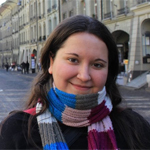 |
|
I graduated BSc+MSc in Computer Engineering from the Universidad
Autónoma de Madrid in Spain and I am currently studying for a divengent
second MSc in Information and Knowledge Society at the Universitat
Oberta de Catalunya. I started working at CERN as a technical student in
the IT-CIS-DLT section for the EU Project CRISP and now, I am a fellow
in the GS-SIS-OA group. I am currently working for the EU Project ODIN
on designing an interoperability network of persistent identifiers that
will ease the reuse of data in the scientific community. These
developments would enhance the HEP information system INSPIRE. My
background includes experience in communication and social networks and
I am particularly interested in how technology can help to overcome
scientific and social challenges. |
|
| |
|
SHADURA Oksana |
Bogolyubov Institute for Theoretical Physics of the
National Academy of Sciences, Kiev - Ukraine |
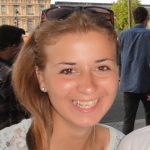 |
|
I had finished MSc, in Computer Science, specialization in Information
Security. In July - August 2012, I was accepted for CERN Summer Student
School and focused on analyse of existing commercial clouds for usage of
ALICE experiment. During my work in BITP I am responding for
administration grid cluster for needs of ALICE experiment, security
support, regional support Ukrainian grid infrastructure. I am familiar
with administration skills (Linux, networks), shell scripting, C++,
Python, basic knowledge of ROOT, Aliroot packages. My recent project is
to build private cloud in BITP for computing aims of institute. |
|
| |
|
SRIPADA Raja Babu
|
CERN, Geneva - Switzerland |
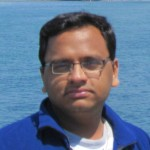 |
|
I have a Masters in Computer Science from the Swiss federal institute of
technology in Lausanne. I did my Masters project at CERN in the IT-CIS
group before starting my fellowship in GS-SIS. I had interned with ABB
corporate research, Microsoft research and Bhabha atomic research centre
in the past. Among other projects, I currently work on user driven
acquisition mechanism of print books for the library using the metadata
obtained from Amazon. I work in the Linux environment and mostly use
Python, HTML, XML, XSLT and MySQL. I have worked with C, Java, PL/SQL,
Javascript, C# and Matlab. |
|
| |
|
TIMMERMAN Jens |
University of Ghent, Gent - Belgium |
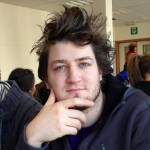 |
|
I
am responsible for system administration and user support at the HPC
site of Ghent University. I build scientific software on a daily basis,
and am contributing to easybuild, a framework for sysadmins to help
building software. Furthermore I
try to help scientist work on our HPC infrastructure and debug their
problems. I am familiar with (in respective order): - linux (RHEL,
debian, fedora, ubuntu), os X, Windows. - python, java, c/c++ |
|
| |
|
VEZNAVER Robert |
CERN, Geneva - Switzerland |
 |
|
I am a computer engineer working as a fellow at CERN in the team
responsible for monitoring the Worldwide LHC Computing Grid. My work
revolves mostly around making sense of the large amount of metrics
received from a vast number of tests executed on computers around the
world. I have previously held lectures for the "Advanced Linux" class
and worked as a system administrator at my university. In addition, I
held presentations at educational institutions for Apple in Croatia and
wrote plugins for the OpenVAS project. I hold a Master of Science degree
in Information and Communication Technology from the Faculty of
Electrical Engineering and Computing, University of Zagreb. As a result
of my quest for knowledge I currently speak four languages, programs in
many more, study Aikido, play piano, and mix some tunes from time to
time. |
|
| |
|
VIAZLO Oleksandr |
Lund University - Sweden |
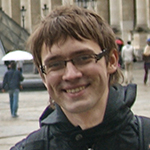 |
|
I am currently a PhD student at the Lund University, working in the
ATLAS experiment. My work is focused on the implementation of Monte
Carlo simulation of the Argon-based gas mixture as an active gas in the
Transition Radiation Tracker (TRT) of the ATLAS detector. I model
different physics processes inside the official Atlas code, which
require to use C++ together with Python in a large framework, with
several interdependencies. Requirements are that new code should be
compatible with current interfaces and it should be well optimized in
order to fulfil tight CPU and memory restrictions to perform simulation.
Beside C/C++ and Python I use analysis framework ROOT, html and shell
scripting. I am also involved in the same-sign inclusive dilepton
searches within the Exotics group; I plan to extend the existing
analysis programs with the option of parallel computing using PROOF. I
am proficient in Linux (namely, my favourite Arch Linux) and I have
experience with Windows OS. |
|
| |
|
WARDZINSKA Aleksandra |
CERN, Geneva - Switzerland |
 |
|
I am a software engineer with 6 years of work experience, most of it
acquired at CERN. My current work activities are focused around EDMS
(Engineering & Equipment Data Management Service), which stores the
technical documentation of CERN and the LHC. I do programming mostly in
Java and PL/SQL, I also design features for EDMS and supporting software
(external APIs, batch data imports). I supervise a small team developing
a new web interface for EDMS. I have MSc in Computer Science obtained
from Warsaw University of Technology. |
|
| |
| |










